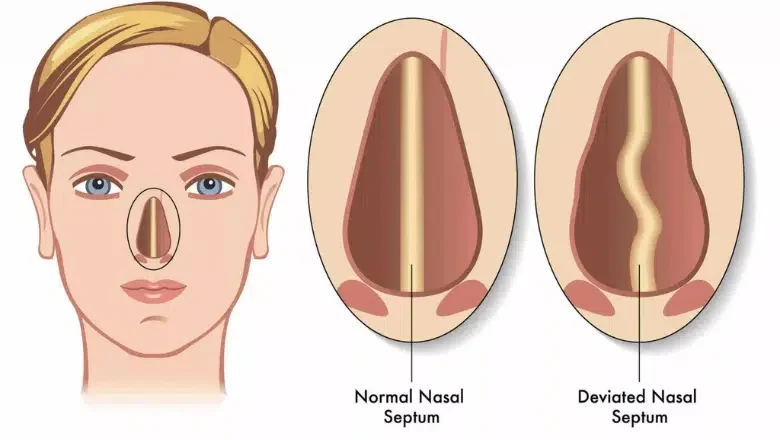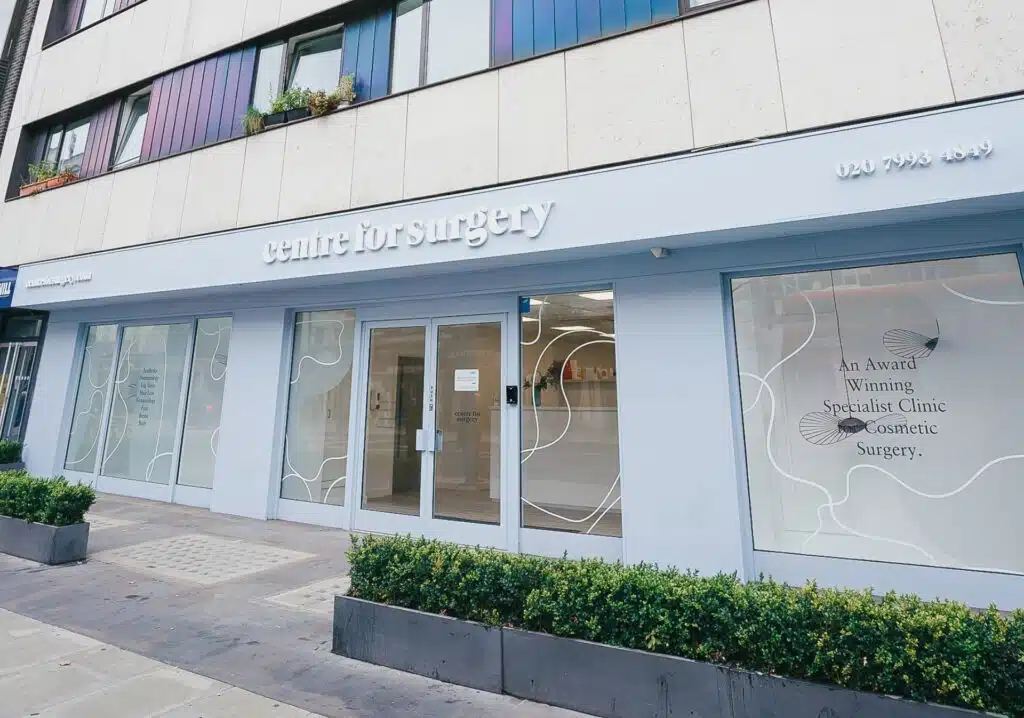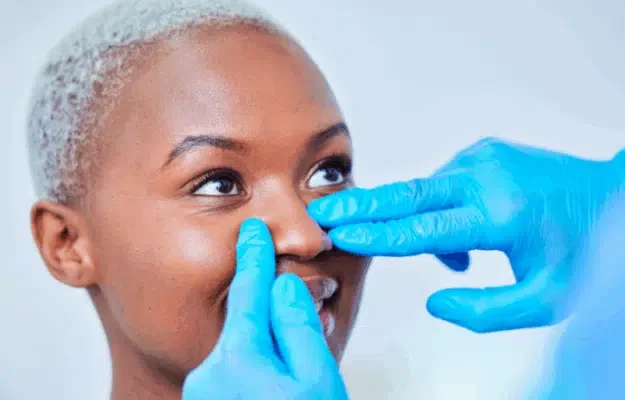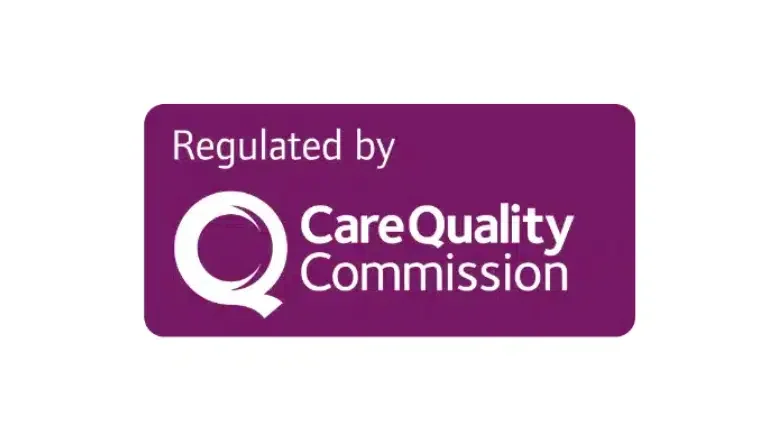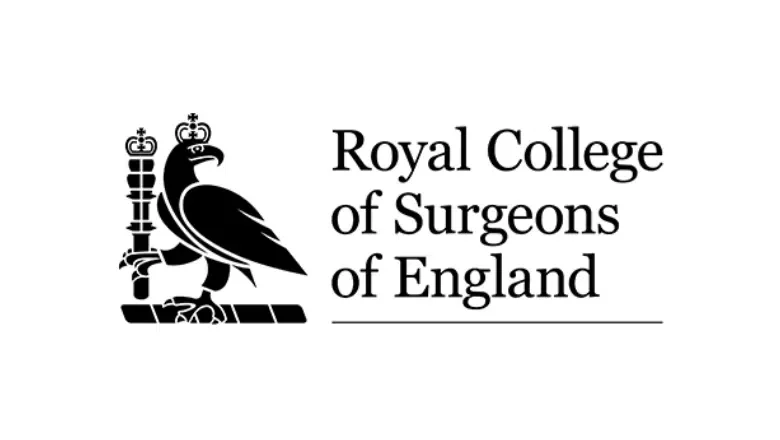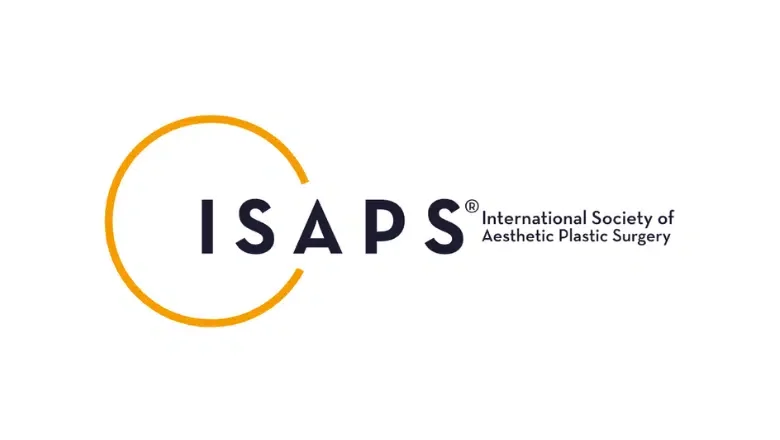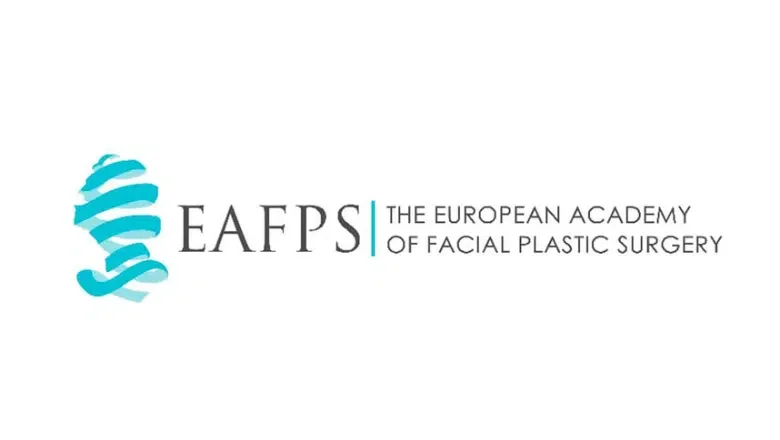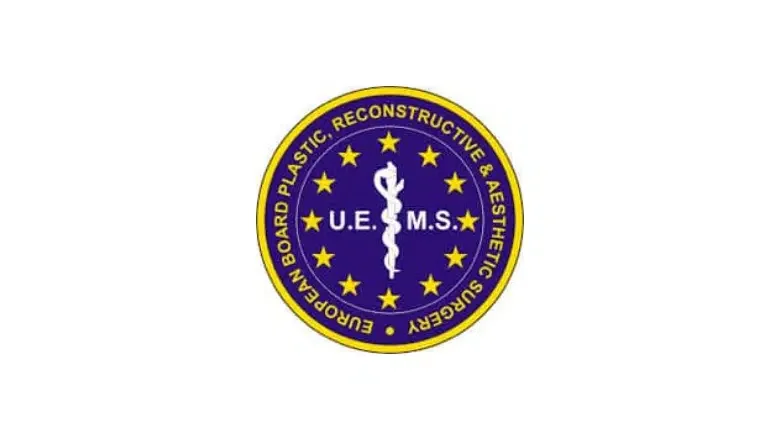Septoplasty in London
Septoplasty is a type of rhinoplasty procedure which is designed to reconstruct the nasal septum by removing or reshaping deviated parts of the septal cartilage or nasal bones.
The nasal septum is the internal wall within your nose that divides the two nasal passages or nostrils into left and right sides. Septal deviation is a prevalent issue, often resulting from an injury or trauma, although it can also be present from birth. A deviated septum occurs when this wall is displaced or bent, leading to one nasal passage being smaller than the other. This condition can cause breathing difficulties, nasal congestion, sinus infections, and sleep disturbances. In some cases, septal deviation may require surgical intervention, such as septoplasty, to correct the issue and restore normal nasal function.
RELATED:Breathing Better: How Septoplasty and Turbinate Reduction Can Help
The septoplasty procedure results in better airflow in patients who suffer from nasal airway obstruction, often related to having a deviated septum. Septoplasty is designed to improve function by treating nasal blockage, which differs from an aesthetic rhinoplasty for the improvement of the appearance of the nose. Septoplasty is commonly combined with rhinoplasty to improve both appearance and function in one procedure. This surgery is known as septorhinoplasty.
Centre for Surgery is home to some of the best rhinoplasty surgeons in London, with expertise in both aesthetic and functional rhinoplasty for bent septum correction.
What is Septoplasty?
Septoplasty is a surgical procedure aimed at correcting and reshaping the nasal septum. Also known as septal deviation surgery, septum surgery, or nasal septum correction, it can be performed as a standalone procedure or in conjunction with a full rhinoplasty to reshape the entire nose. Trauma often causes septal deviation, which can occur during birth and become increasingly noticeable as a person grows.
The nasal septum is a wall composed of bone and cartilage that divides the inner nasal cavity into left and right chambers. The nasal septum comprises:
A hard bony part
The upper and posterior portion of the nasal septum consists of sturdy bone (ethmoid and vomer bones).
A soft cartilage part
The anterior and lower portion of the septum is made of cartilage – a flexible, firm type of tissue (similar in firmness to the tip of your nose). This part extends to the end at the columella, the tissue column between your nasal openings.
Septoplasty Before & After
Benefits of Septoplasty Surgery
Septoplasty surgery is performed to correct a deviated septum, which can have several benefits for patients. Some of the potential benefits of septoplasty surgery include the following:
Improved breathing
The most obvious benefit of septoplasty is improved breathing through the nose. A deviated septum can cause nasal congestion or blockages, which can make it difficult to breathe through one or both nostrils. After septoplasty, patients may experience a significant improvement in their ability to breathe through their nose.
Reduced sinus infections
A deviated septum can also increase the risk of sinus infections, as the blockages caused by the deviation can trap mucus in the sinuses. Septoplasty can help to reduce the frequency and severity of sinus infections.
Reduced snoring
A deviated septum can also contribute to snoring, as the blockages can cause turbulent airflow in the nose, which can lead to vibration of the soft palate. Septoplasty can help to reduce or eliminate snoring.
Improved appearance
In some cases, a deviated septum can cause the nose to appear crooked or uneven. Septoplasty can help to improve the appearance of the nose by straightening the septum and creating a more symmetrical appearance.
Improved sleep quality
Septoplasty can improve the overall quality of sleep, as patients will be able to breathe more easily through their nose and have reduced snoring, which can lead to better quality sleep and reduction of sleep apnea symptoms.
Am I suitable for septoplasty?
Septoplasty or nose septum surgery is an excellent treatment option for addressing the negative effects caused by a deviated septum with a subsequent improvement in quality of life. Many patients report difficulty breathing with recurrent nosebleeds which affect their daily activities. Partners may be unable to sleep due to excessively loud snoring and periods of sleep apnoea. Having any of the symptoms may mean you are ideal for septoplasty surgery.
We would recommend stopping smoking at least four weeks before the procedure, as smoking has a negative effect on healing and recovery. The constituents of cigarette smoke delay healing with an increased risk of wound infections and may result in irritation of the delicate internal nasal lining. Smoking affects the blood supply to the healing area. Patients should be over 18 to be considered for treatment, and certain medicines should be stopped before surgery, including aspirin and medicines containing aspirin. These medications have an increased risk of causing bleeding during or after the procedure. You should also avoid taking over-the-counter herbal supplements.
Preparing for a Septum Surgery
When planning for septoplasty, a surgical intervention to correct a deviated septum, there are several important preparatory steps to ensure your safety and the surgery’s success. Your healthcare provider will guide you through specific instructions tailored to your individual needs, but here are some general guidelines to follow.
Medication Guidelines
A critical part of preparing for your surgery involves adjusting your medication intake. Your surgeon will advise you to stop taking certain medications that can increase bleeding risk, such as aspirin, ibuprofen, and any blood thinners, two weeks before your surgery. This precaution significantly reduces the chance of excessive bleeding and bruising during and after the procedure.
Communication is Key
If you have any allergies, especially to medications, or if you’ve experienced bleeding problems in the past, it’s vital to inform your surgeon or the anaesthetist well ahead of your surgery date. This information helps them ensure your safety throughout the surgical process.
Fasting Before Surgery
Since septoplasty is typically performed under general anaesthesia, you’ll need to fast for at least 8 hours before your operation. This means no eating or drinking anything during this time frame. Fasting is essential to prevent any complications during and after the surgery.
Arranging Transportation
Due to the lingering effects of anaesthesia, you won’t be in a condition to drive yourself home post-surgery. It’s necessary to arrange for a family member or a friend to pick you up and take you home safely after the procedure.
Before and After Photos
Your surgeon will take photographs of your nose before the surgery and during your recovery. These images serve a dual purpose: they provide a visual record of your nose’s structure for medical reference and allow you to see the changes in your nasal appearance clearly post-surgery.
What type of anaesthesia is used for septoplasty?
Septoplasty is a surgical procedure to correct a deviated septum. Depending on the patient’s preference, the surgeon’s preference, and the complexity of the surgery, it can be performed under both general and local anaesthesia.
General anaesthesia is when the patient is put to sleep and feels no pain during the procedure. This is typically used for more complex cases and for patients who have a higher level of anxiety about the procedure.
Local anaesthesia is when the patient is awake, but the area around the nose is numbed to block pain. This is typically used for less complex cases and for patients who would prefer to be awake during the procedure.
Ssome patients may receive a combination of local and IV sedation. This is called conscious sedation. In this form of anaesthesia, the patient is awake but relaxed and less aware of the procedure.
The type of anaesthesia used will be determined by the surgeon and anaesthetist based on the individual case and patient preferences.
Septoplasty Procedure
Before the procedure, you will have a detailed preoperative assessment by one of our skilled nurses to review your medical history and organise blood tests as required by your surgeon. Septoplasty surgery is most commonly carried out under a general anaesthetic, although in some cases, particularly when it is performed on its own, the procedure can be performed using a local anaesthetic and sedation. The complexity of the procedure as well as your surgeon’s preference, will determine the most appropriate type of anaesthetic.
After administering anaesthesia, the surgeon begins by making an incision in the nose. In most cases, surgeons typically employ the “closed technique” for septoplasty, where the incision is made inside the nostril without any external incisions.
However, sometimes the surgeon may opt for an “open technique” for septal correction, which involves an additional incision on the columella between the nostrils. This approach is more common in patients who require more extensive septal trimming and possibly other interventions, such as tip plasty, alarplasty, nasal bridge reduction, or a nose lift. This type of procedure is called septorhinoplasty.
Next, the surgeon lifts the nose skin and tissue to better visualize the nasal septum from the inside. The surgeon then cuts, trims, sculpts, reshapes, bends, and manipulates the nasal septum to attain the desired orientation and size. Removed pieces of septal cartilage, and sometimes even bone, may be utilised to correct septal deviation. In some instances, sutures might be employed to secure the cartilage in position.
Once the surgeon is satisfied with the shape, size, and orientation of the nasal septum, they will close the small wounds. Dissolvable stitches are typically used to ensure seamless healing.
In some cases, your nose might be packed with gauze or a silicone splint to keep the septum in place until it heals properly.
Septoplasty on its own takes approximately one hour to carry out, depending on the amount of septal reconstruction required. Septoplasty is a day-case procedure at Centre for Surgery in London which means patients can recover in the comfort of their own homes later the same day.
Recovery after Nose Septum Surgery
Once the septoplasty surgery is complete, your surgeon will place internal splints into the nostrils to support the healing septum and this should be worn for at least 2 to 3 days after the procedure before they are removed in the clinic. It is common to notice bruising and swelling under the eyes. There are several ways to reduce localised bruising and swelling, and we would recommend the following measures for two weeks after the procedure:
- Sleep on your back with your head raised on a couple of pillows
- Avoid strenuous exercise, including going to the gym
- Avoid blowing your nose
- Be careful when putting on shirts which go over the head to avoid contact with the nose
The vast majority of patients can return to their normal activities after 48 to 72 hours, although physical exercise should be restricted for at least four weeks after deviated septum surgery. You should avoid blowing your nose for at least two weeks after septoplasty surgery, as this can increase the risk of bleeding. Gently cleaning the nose can be carried out using sachets of sterile saline. Patients should avoid exercising for a minimum of four weeks after nose septum surgery and should avoid all contact sports for a minimum of eight weeks to minimise the risk of injury to the nose.
We recommend stopping smoking for at least six weeks after the surgery, as smoking lengthens the recovery time and can increase the risk of wound breakdown and infection.
Potential Risks and Complications of Septum Surgery
Septoplasty, as with any type of surgical procedure, carries a number of risks and potential complications, which include bleeding, infection or an allergy to the anaesthetic. Other potential complications of septoplasty include:
- Persistence of nasal blockage symptoms
- Recurrent bleeding
- A change in the appearance of the nose
- Nasal septum perforation
- Reduced sense or no sense of smell
- Septal haematoma formation
- Numbness of the middle third of the face
Septoplasty Cost London – How much is a Septoplasty in the UK?
The cost of the septoplasty procedure will depend on the complexity of the septal correction required and whether the procedure will be combined with cosmetic rhinoplasty, also known as septorhinoplasty. For patients who would like to improve the appearance of their nose, we would always recommend having a combined septorhinoplasty procedure, which can significantly save on costs.
Once you have had your face-to-face consultation, your dedicated patient coordinator will give you an all-inclusive quotation, which includes the facility costs, anaesthetic and surgical fees and the cost of care.
Does private medical insurance cover septoplasty?
Septoplasty is a type of functional nose surgery and may, therefore, be covered by private medical insurance. If you are unsure, please ask your surgeon at the consultation.
Septoplasty in London: Why Choose Centre for Surgery
FAQs
-
What causes a deviated septum?A deviated septum is when the wall that separates the two nostrils (the septum) is not straight. This can be caused by a congenital condition (present at birth) or by injury to the nose. Some common causes of injury that can lead to a deviated septum include sports injuries, car accidents, and falls. In some cases, a deviated septum may be present from birth and not cause any problems, but in other cases, it can lead to difficulty breathing, recurrent sinus infections, or other issues.
-
Is nasal airflow blockage always caused by a deviated septum?There are several conditions which may cause blockage of the nasal airway including a deviated septum, enlargement of the turbinate bones, narrowing of the nasal internal or external nasal valve, scar tissue from previous rhinoplasty surgery and functional conditions which affect the internal lining of the nose. All of the above conditions may result in the turbulence of airflow through the nasal passages which may result in resistance to airflow and this can give rise to symptoms of nasal blockage.
A skilled rhinoplasty surgeon has the skills and experience to diagnose and correct all of these problems. Our surgeons are regularly referred difficult cases by other surgeons in London and the rest of the UK. This is because they are known for their expertise, which allows them to address all the issues which may be contributing to symptoms of nasal airway obstruction. -
What are the symptoms of nasal blockage and nose septum problems?Patients who have a deviated septum may develop blockage of the nasal airways due to malposition of the internal septum partition, which separates the two nostrils. Many people are born with a deviated septum, but it can also be due to traumatic injury and the natural ageing process.
Common symptoms of a deviated septum include:
Difficulty breathing
Inability to smell partially or completely
Recurrent nosebleeds or epistaxes
Sinus infections
Facial pain
Headaches
Excessive snoring and sleep apnoea -
Can a Deviated Septum Worsen Over Time?While a deviated septum does not necessarily get worse over time, it can cause ongoing problems with nasal breathing and other symptoms that may worsen over time if left untreated. In some cases, a deviated septum can also increase the risk of certain nasal conditions, such as chronic sinusitis or nasal polyps, which can cause additional symptoms and complications. If a person is experiencing ongoing problems with nasal breathing, nasal congestion, or other symptoms related to a deviated septum, it is recommended to consult with a medical professional who can help determine the best course of treatment. Septoplasty is a common surgical procedure used to correct a deviated septum and improve nasal breathing and related symptoms.
-
Are Deviated Septums a Frequent Condition?Indeed, deviated septums are remarkably common, with medical estimates suggesting that up to 80% of individuals may have some form of deviation in their nasal septum. This widespread prevalence highlights the routine nature of conditions related to nasal obstructions.
-
What Are the Consequences of Not Treating a Deviated Septum?Neglecting a deviated septum can lead to complications such as sleep apnea, which in turn may increase the risk of serious health issues including high blood pressure, stroke, heart failure, heart attacks, diabetes, depression, exacerbation of ADHD, and headaches.
-
Does Undergoing Septoplasty Alter the Shape of My Nose?Septoplasty is primarily performed to correct a deviated septum and does not typically result in changes to the nose's external shape. However, for individuals looking to modify the aesthetic appearance of their nose, septoplasty can be combined with rhinoplasty, a procedure specifically aimed at reshaping the nose for cosmetic reasons.
-
Does Septoplasty Result in a Larger Nose?After septoplasty, there should be no increase in the size of the nose. The procedure aims to correct internal obstructions without altering the nose's external dimensions.
-
How Common Is Septoplasty Surgery?Septoplasty is a widely performed surgical intervention designed to address nasal blockages caused by a deviated septum. It stands as a prevalent procedure within the realm of nasal surgeries, owing to the commonality of deviated septums among the general population.
-
At What Age Is Septoplasty Recommended?At Centre for Surgery, patients are required to be over the age of 18 to undergo septoplasty surgery, ensuring that candidates have reached full nasal development.
-
Is There a Difference Between Septoplasty and a Nose Job?Yes, septoplasty and rhinoplasty (commonly referred to as a nose job) are distinct procedures. Septoplasty is focused on correcting internal structural issues to alleviate obstruction and improve breathing, whereas rhinoplasty is concerned with the aesthetic enhancement of the nose's appearance.
-
Can I Detect a Deviated Septum Using My Finger?Directly feeling a deviated septum with your finger is unlikely. However, there is a simple at-home test you can perform:
Block one nostril with your index finger and breathe in through the other.
Repeat on the opposite side.
Compare the ease of breathing through each nostril.
An evident difference in airflow might indicate the presence of a deviated septum. -
What is the success rate of septoplasty?Septoplasty is a surgical procedure used to correct a deviated septum, which can cause breathing problems, nasal congestion, and other symptoms. The success rate of septoplasty can vary depending on various factors, such as the severity of the deviated septum, the specific surgical technique used, and the individual's overall health and healing ability.
-
Will Septoplasty Enhance My Breathing?Undergoing septoplasty is expected to significantly improve nasal airflow, leading to enhanced breathing capabilities by correcting the obstruction caused by a deviated septum.
-
Why Isn't My Nose Perfectly Straight?A perfectly straight nose is relatively uncommon. Variations in nasal straightness can be attributed to a deviated septum or natural growth processes during childhood, leading to slight bends or deviations.
-
What does nasal septum surgery involve?Nasal septum surgery involves strengthening the septum with several techniques, which may include shortening the septum, and restoration or repositioning cartilage and bone to lie in a more central position for adequate support septum. Septoplasty does not involve any external incisions being made on the skin of the nose. All incisions are made inside the nose on each side of the nasal septum.
In a small number of cases, it may be necessary to make an incision between the nostrils on the columella. This is more often the case when a septorhinoplasty is performed. The incisions are then closed with dissolvable stitches. -
Does septoplasty hurt?The surgeon will inject local anaesthetic during the procedure to ensure you are completely numb and this anaesthetic effect will last long into the post-operative recovery period meaning you will be comfortable. Any mild discomfort can be easily controlled with over-the-counter painkillers for a couple of days after the procedure.
Septoplasty recovery is relatively quick without significant discomfort meaning patients can get back to daily activities much quicker. -
How long does it take to recover from a septoplasty?While most individuals can resume work two weeks after septoplasty, full recovery can span from 2 to 3 months, varying by patient.
-
How Soon Will I Notice Improved Breathing After Septoplasty?Patients typically observe a notable improvement in nasal breathing within 7 to 10 days following septoplasty, marking the beginning of the recovery phase.
-
How long will my nose be blocked after septoplasty?Initially, the nose may be blocked for the first week to ten days post-surgery, with gradual clearance occurring over the following weeks.
-
Are There Scars After Deviated Septum Surgery?In most cases, septoplasty is performed entirely through the inside of the nose, which means that there is no visible external scarring. However, in some cases, an incision may need to be made in the skin between the nostrils (columella) to gain access to the septum, which can leave a small scar that is usually not very noticeable. The size and location of any potential scar will depend on the specific technique used by the surgeon and the individual's unique anatomy.
-
Does septoplasty change nose shape?While the primary goal of septoplasty is to improve nasal breathing by straightening the septum, in some cases, septoplasty can also have a subtle effect on the external shape of the nose. This is because the septum is a central structural support for the nose, and changes made to the septum can alter the way the nasal skin and tissues drape over the nasal framework. However, the degree of change to the external shape of the nose is usually minimal and generally not the primary goal of the procedure. If a person desires more significant changes to the appearance of their nose, they may need to undergo a separate cosmetic rhinoplasty procedure.
-
Will septoplasty alter the appearance of my nose?The appearance of the nose is not affected in most cases. In a small number of cases where there is a severe deviation of the septal cartilage, there may be a minor change in the shape of your nose.
-
Does septoplasty change your voice?In general, septoplasty should not affect the sound or quality of a person's voice, as the vocal cords are located in the larynx, which is separate from the nasal passages.
However, in rare cases, septoplasty may cause a temporary change in the voice or a sensation of "nasal" speech immediately after the procedure due to swelling and inflammation in the nasal tissues. These symptoms usually resolve within a few days to a few weeks as the nasal tissues heal and the voice returns to normal.
It's important to note that if a person has other procedures performed at the same time as the septoplasty, such as a rhinoplasty or tonsillectomy, these procedures may affect the voice to some extent, and any changes in voice quality or sound should be discussed with the surgeon prior to the procedure. -
Will Septoplasty Cure Snoring?For patients whose snoring is attributed to nasal obstruction, septoplasty can provide significant relief, potentially improving overall sleep quality.
-
Is it possible to combine nose septum surgery with a cosmetic rhinoplasty?Yes. Your surgeon may even prefer to combine these two procedures in the same surgery. This is because any cartilage which is removed from the septum to straighten it can often be used as a graft for the cosmetic part of the rhinoplasty.
Choosing to have a rhinoplasty separately after your septoplasty may mean that any septal cartilage is not available for use as a graft. Cartilage grafts may then need to be taken from other areas, such as the ears or the ribs.
Combining a septoplasty with a rhinoplasty also means a much initial quicker recovery of approximately one week as opposed to having two separate recovery periods from each procedure.


